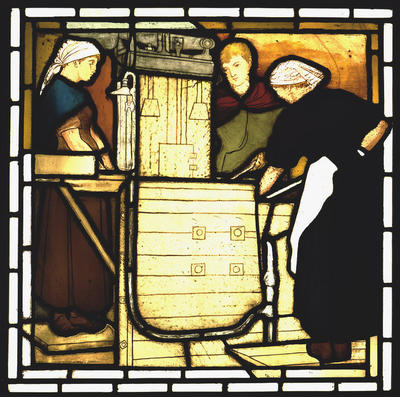
A stained glass window, The Calico Printers by Stephen Adam, c 1878.
This window is one of a series of twenty made for Maryhill Burgh Halls. Each of the windows showed a trade or profession carried on in the burgh, which was established in 1856 and remained independent until it was annexed by Glasgow in 1891. The stained glass panels are now part of the People's Palace collections.
Calico is a cotton cloth decorated with tiny repeating floral or geometric patterns which was introduced to Europe in the 17th century. It was originally imported from Kolkata (Calcutta) in India by the East India Company, hence the name calico. By the 1690s calico works had been established in Britain, where there was a strong demand for it. William Stirling established a calico works at Dawsholm, but by 1770 had moved to a larger site in the Vale of Leven.
Reference: 621.86.23
Reproduced with the permission of Glasgow City Council, Glasgow Museums
Keywords:
cloth, East India Company, Maryhill Burgh Halls, stained glass windows, textile finishing, textile industry, The Calico Printers, women
You have 1 image in your photo album.